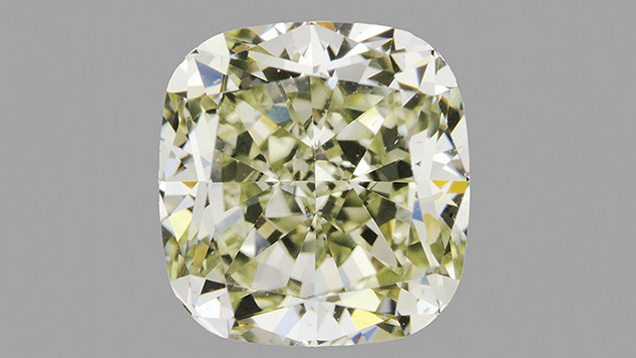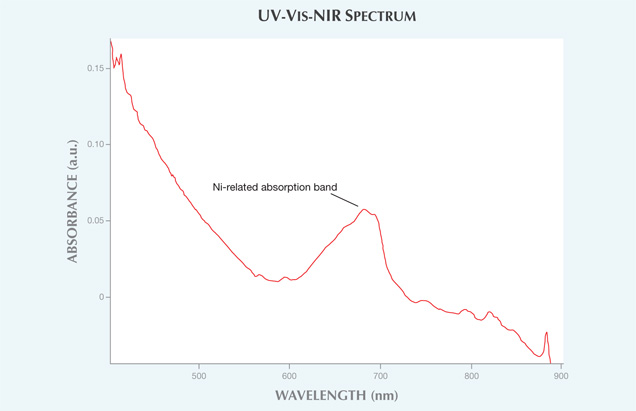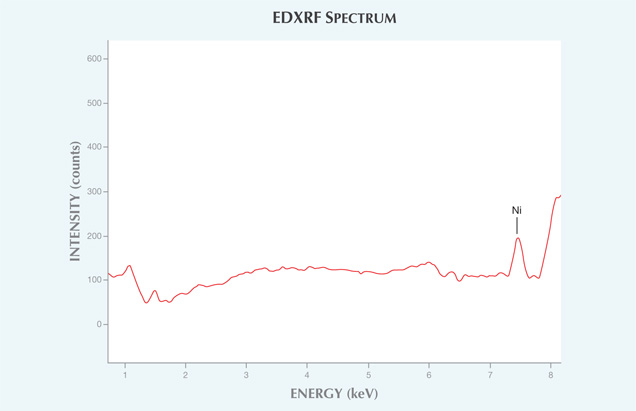Diamond with High Concentration of Nickel

A 2.54 ct cushion-cut diamond (figure 1) was color graded as Fancy Light greenish yellow. Its UV-Vis-NIR spectrum showed a large absorbance caused by nickel-related defects (figure 2). It is unusual for a diamond to be solely colored by nickel, and more so for the diamond to be graded in the fancy color range. Such diamonds have been previously reported (W. Wang et al., “Natural type Ia diamond with green-yellow color due to Ni-related defects,” Fall 2007 G&G, pp. 240–243), but this was the first time energy-dispersive X-ray fluorescence (EDXRF) spectroscopy has been run to detect the presence of nickel. As seen on the XRF spectrum (figure 3), the nickel content was high enough to be detected. This is likely related to the diamond’s fancy color saturation.


In addition to its unusual color origin, the diamond contained a mineral inclusion with a color-change effect. It appeared purple under the incandescent well light of a gemological microscope and dark blue under the fluorescent overhead light on the same microscope. We suspected the inclusion was a color-change garnet, and this was confirmed using Raman spectroscopy. The stone also contained a small cloud of oriented reflective inclusions associated with type IaA diamonds, consistent with this sample’s diamond type. The diamond showed weak green transmission, which was unusual because it had no defects commonly associated with green transmission (i.e., the H3 feature). Whether the transmission is related to the nickel content is not known.



